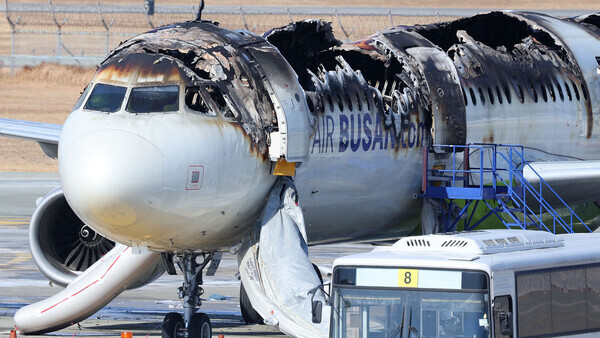
Gimhae, South Korea – Preliminary findings from an investigation into the Air Busan aircraft fire at Gimhae International Airport in late January suggest that a short circuit within a portable battery is the most probable cause. The Aviation and Railway Accident Investigation Board (ARAIB) released its findings on March 14, following a thorough joint fire inspection.
The incident, which occurred on an Air Busan flight preparing for takeoff to Hong Kong, resulted in the safe evacuation of all 176 passengers and crew members. However, the aircraft sustained significant damage, with the fire originating in the rear overhead compartment and spreading to the cockpit.
Investigators from the ARAIB, in collaboration with the National Forensic Service, police forensic teams, and fire authorities, conducted a detailed analysis of the aircraft's rear section. The examination of debris found near the fire's origin revealed remnants of a portable battery with clear indications of an internal short circuit. This type of malfunction can lead to a rapid increase in temperature, resulting in a fire.
“While the evidence strongly points to a short circuit within the portable battery, the device was too severely damaged to pinpoint the exact cause of the short circuit,” stated an ARAIB spokesperson.
The investigation has ruled out other potential causes, such as malfunctions in the aircraft’s electrical wiring or lighting systems. The ARAIB will continue to focus its efforts on understanding the circumstances surrounding the portable battery's failure.
“Our priority is to determine the precise sequence of events that led to this fire and to identify any measures that can be taken to prevent similar incidents in the future,” the spokesperson added.
The ARAIB has indicated that it may issue safety recommendations to airlines as the investigation progresses. This incident has raised concerns about the potential fire risks associated with portable electronic devices on aircraft, prompting calls for stricter regulations and passenger education.
[Copyright (c) Global Economic Times. All Rights Reserved.]






























